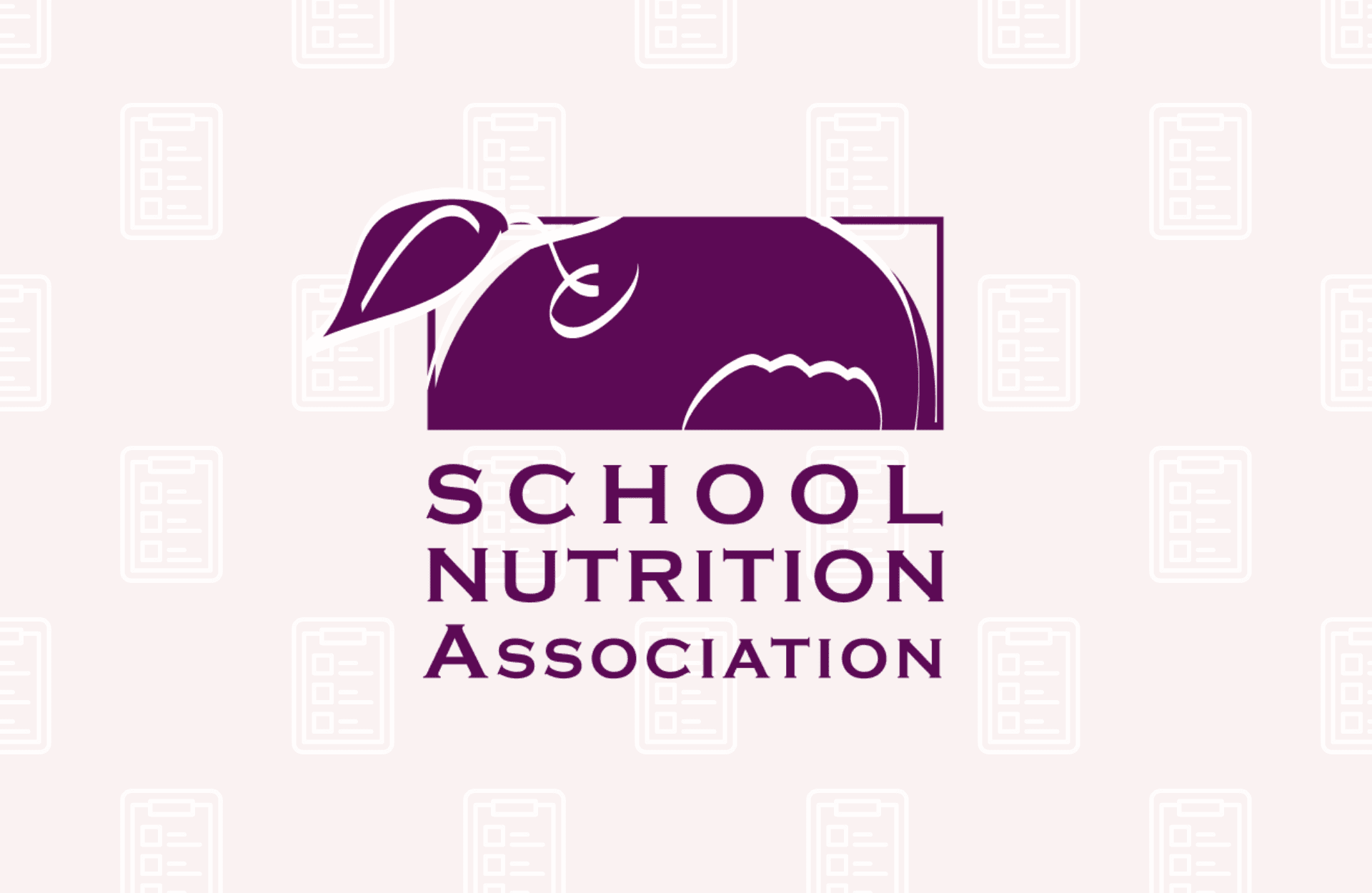FOR IMMEDIATE RELEASE:
Contact: Diane Pratt-Heavner
301-686-3124
media@schoolnutrition.org
School Nutrition Association Releases “State of School Nutrition 2011”
2011-08-18
National survey shows healthy trends taking root in school cafeterias.
NATIONAL HARBOR, MD, August 18, 2011 – A new national survey of school foodservice directors shows that students heading back to school this fall will find more fresh fruits and vegetables, whole grain options and locally grown foods in school cafeterias. School Nutrition Association (SNA)’s “School Nutrition Operations Report: The State of School Nutrition 2011” finds that more than 69% of the 1,294 directors surveyed consider implementing recently proposed nutrition standards for school meals, which require more of these healthy options, to be their top concern.
Results show limited funding and cost of food were also pressing issues for school nutrition programs. Yet despite the challenges presented by new, complex nutrition standards and tight budgets, The State of School Nutrition 2011 reveals school cafeterias nationwide have made dramatic progress in improving the quality of the meals served to nearly 32 million children every school day:
• Nationwide, nearly every school district offers fresh fruits and vegetables (98%)
• Whole grain foods have become readily accessible (97%)
• 89% of school districts offer salad bars or pre-packaged salads
• About two-thirds provide vegetarian meals (63%)
• Virtually all districts offer fat-free or 1% milk (98%)
School nutrition programs are also working to bring more locally sourced foods into schools, with nearly half (48%) of respondents offering locally sourced fruits and vegetables (up from 37% in 2009). School districts are working to help connect and educate students on the foods grown in their region, with 32% involved in farm to school initiatives and another 41% interested in or planning to implement these initiatives. Results also reveal the trend toward school gardens, with 21% of districts confirming to have a school garden and another 37% interested in or planning to implement these programs.
“From spinach to strawberries and pears to pumpkin, school nutrition professionals are constantly working to offer students more fruits and vegetables, and often they are partnering with teachers, farmers and chefs to teach kids about the importance of healthy choices at school and at home,” said Helen Phillips, SNS, president of the School Nutrition Association and Senior Director of School Nutrition for the Norfolk Public Schools (Virginia). “Schools face funding and regulatory hurdles as they work to meet proposed new nutrition standards for school meals, but State of School Nutrition 2011 shows that school nutrition professionals are rising to the challenge.”
Results reveal nutrition education in the classroom is underway in 57% of surveyed school districts with another 31% planning or interested in implementing these programs. Additionally, nearly 9 out of 10 districts (89%) involve students in taste-testing new menu items with 35% reporting students test all or most of the new choices.
The report also found that at least 94% of districts prepare some of their entrees or sides from scratch. Of those that prepare items from scratch, more than 64% prepare at least a quarter of their entrees from scratch and more than 71% prepare at least a quarter of their side dishes from scratch – both results indicating an increase from 2009.
Short lunch periods continue to challenge school nutrition professionals who want their students to have enough time to finish their meals. The typical lunch period length has remained unchanged since 2009, with a median of 25 minutes reported for elementary schools and 30 minutes for middle and high schools.
The State of School Nutrition 2011 covers demographics and operational parameters, programs and policies, breakfast and lunch service types, food safety measures, foodservice budget issues, marketing and customer service and pressing concerns.
The survey was conducted in spring of 2011. Copies of the full report can be ordered from the School Nutrition Association’s online bookstore at https://my.schoolnutrition.org/productcatalog/product.aspx?ID=7010.
To read school nutrition success stories from across the country, visit www.TrayTalk.org.
The School Nutrition Association is a national, non-profit professional organization representing more than 53,000 members who provide high-quality, low-cost meals to students across the country. The Association and its members are dedicated to feeding children safe and nutritious meals. Founded in 1946, SNA is the only association devoted exclusively to protecting and enhancing children’s health and well being through school meals and sound nutrition education.
Related Articles

SNA Urges MAHA Commission to Invest in School Meals
Read More

School Nutrition Professionals to Implore Congress to Protect School Meals
Read More




